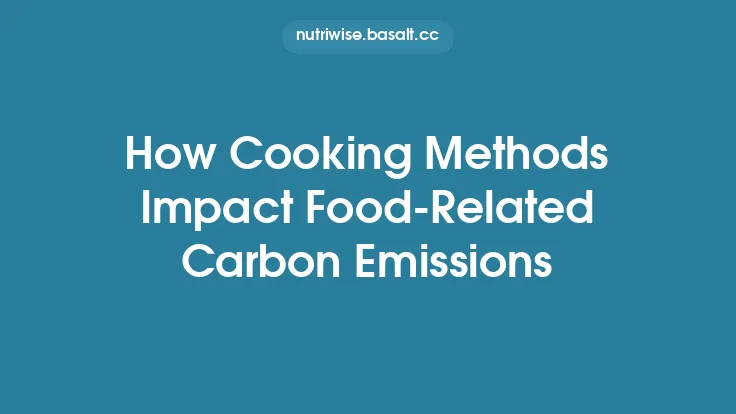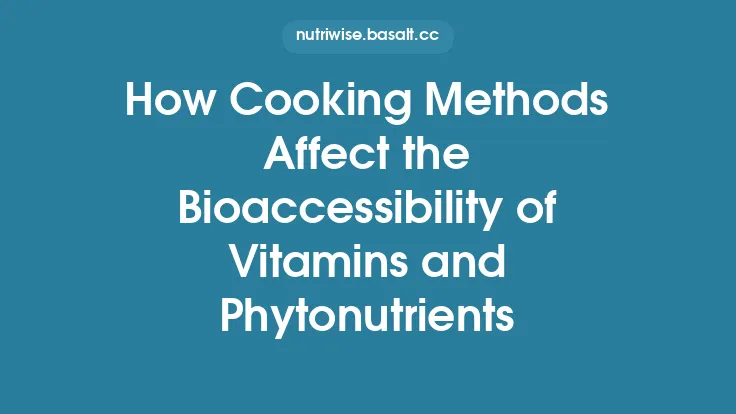Starch is the primary carbohydrate source in many staple foods, ranging from potatoes and rice to wheat‑based products and legumes. While the chemical composition of starch—primarily amylose and amylopectin—remains constant, the way it is prepared can dramatically alter how readily it is broken down by digestive enzymes. Cooking methods such as boiling, steaming, baking, microwaving, frying, and pressure‑cooking each impose distinct thermal and physical stresses on starch granules, influencing processes like gelatinization, retrogradation, and the formation of resistant starch. Understanding these transformations is essential for nutritionists, food scientists, and anyone interested in managing post‑prandial blood glucose, satiety, or long‑term metabolic health.
The Science of Starch Structure
Starch granules are semi‑crystalline assemblies of two polysaccharides:
- Amylose – a mostly linear chain of α‑1,4‑linked glucose units that tends to form helical structures.
- Amylopectin – a highly branched molecule with α‑1,4‑linked chains and α‑1,6 branch points every 24–30 glucose residues.
In their native state, granules are tightly packed, with crystalline regions (dominated by amylopectin) interspersed with amorphous zones (rich in amylose). This organization limits water penetration and enzyme access, rendering raw starch relatively resistant to digestion.
Gelatinization: The Turning Point
When starch is exposed to heat in the presence of water, the granules absorb moisture, swell, and eventually lose their ordered crystalline structure—a phenomenon known as gelatinization. The temperature at which gelatinization begins (the onset temperature) and the extent to which it proceeds depend on several factors:
| Factor | Effect on Gelatinization |
|---|---|
| Moisture content | Higher water activity lowers the temperature needed for granule swelling. |
| Heating rate | Rapid heating can cause uneven swelling, leading to partial gelatinization. |
| pH | Slightly acidic conditions (pH 5–6) can facilitate granule swelling, while highly acidic or alkaline environments may inhibit it. |
| Presence of lipids | Lipid‑starch complexes can raise the gelatinization temperature and reduce swelling. |
Once gelatinized, starch becomes more amorphous, exposing α‑glucosidase and α‑amylase binding sites, which accelerates enzymatic hydrolysis and raises the glycemic response.
Cooking Methods and Their Impact on Gelatinization
| Cooking Method | Typical Temperature Range | Moisture Environment | Typical Effect on Starch |
|---|---|---|---|
| Boiling/Steaming | 90–100 °C | High (water bath or steam) | Near‑complete gelatinization; high digestibility. |
| Baking/Roasting | 150–250 °C (dry heat) | Low to moderate (depends on food moisture) | Partial gelatinization; surface drying can create a crust that slows enzyme access. |
| Microwaving | 100–150 °C (localized heating) | Variable (depends on water content) | Rapid, often uneven gelatinization; can produce pockets of highly digestible starch. |
| Frying | 160–190 °C (oil) | Low water, high fat | Surface gelatinization with formation of lipid‑starch complexes that may reduce digestibility. |
| Pressure Cooking | 115–121 °C (under pressure) | High (steam) | Accelerated and more uniform gelatinization; often yields very digestible starch. |
| Sous‑Vide (low‑temp water bath) | 55–85 °C (long duration) | High (sealed bag) | Partial gelatinization; can preserve more resistant starch if cooked at lower temperatures for extended periods. |
Retrogradation and the Formation of Resistant Starch
After gelatinized starch cools, the linear amylose chains tend to reassociate, forming ordered, crystalline structures—a process called retrogradation. This re‑ordering reduces enzyme accessibility, creating resistant starch type 3 (RS3), which behaves similarly to dietary fiber in the gut.
Key variables influencing retrogradation:
- Cooling Rate – Slow cooling promotes more extensive amylose realignment.
- Storage Temperature – Refrigeration (4 °C) enhances retrogradation; freezing can further increase RS3 content.
- Starch Composition – High‑amylose varieties (e.g., certain rice or legume cultivars) generate more resistant starch upon cooling.
- Moisture Content – Moderate water levels (30–40 % of dry weight) favor crystal formation; too much water keeps starch in a gel state, limiting retrogradation.
Thus, the same food can have markedly different digestibility profiles depending on whether it is consumed hot, warm, or after being refrigerated.
Quantifying Starch Digestibility
Researchers employ several methods to assess how cooking alters starch breakdown:
- In‑vitro Enzymatic Digestion – Simulated gastric and intestinal phases using α‑amylase and pancreatin, measuring glucose release over time.
- Rapidly Digestible Starch (RDS) vs. Slowly Digestible Starch (SDS) – Partitioning the total starch based on the rate of glucose appearance in the assay.
- Resistant Starch (RS) Determination – Enzymatic digestion followed by precipitation of undigested starch, often using the AOAC 2002.02 method.
- Glycemic Index (GI) Testing – Human trials where post‑prandial blood glucose responses are compared to a reference (usually glucose or white bread).
These techniques reveal consistent patterns: foods that undergo full gelatinization and are consumed hot tend to have high RDS and GI values, whereas those that are cooled after cooking exhibit increased RS and lower GI.
Practical Implications for Different Populations
| Population | Desired Starch Profile | Recommended Cooking/Serving Strategies |
|---|---|---|
| Individuals with Type 2 Diabetes | Lower RDS, higher RS to blunt glucose spikes | Boil potatoes, then cool them for salads; use low‑temperature sous‑vide for grains; incorporate reheated leftovers rather than freshly cooked starches. |
| Athletes needing rapid energy | High RDS for quick glucose availability | Consume freshly boiled rice or pasta immediately after cooking; avoid prolonged cooling. |
| Weight‑management focus | Higher satiety, lower caloric absorption | Emphasize foods with higher RS (e.g., cooled legumes, retrograded rice); combine starches with healthy fats to slow gastric emptying. |
| Gut‑health enthusiasts | Promote colonic fermentation of RS | Regularly include cooled cooked starches; consider adding a small amount of resistant starch powder to smoothies. |
Cooking Tips to Modulate Starch Digestibility
- Control Water Ratio – Use just enough water to hydrate the starch; excess water can lead to over‑gelatinization and higher digestibility.
- Mind the Temperature – For lower GI outcomes, aim for sub‑gelatinization temperatures (e.g., sous‑vide at 65 °C) followed by rapid cooling.
- Leverage Cooling – After cooking, spread the food thinly on a tray to cool quickly, then refrigerate for at least 12 hours to maximize RS3 formation.
- Combine with Lipids Wisely – Light coating of oil during frying can create amylose‑lipid complexes that modestly reduce digestibility without making the food overly greasy.
- Avoid Re‑heating at High Temperatures – Microwaving reheated, cooled starches can partially reverse retrogradation, increasing digestibility again. Gentle reheating (e.g., steaming) preserves RS.
Emerging Research Directions
- Hybrid Cooking Protocols – Sequential methods (e.g., pressure‑cook followed by refrigeration and brief sous‑vide) are being explored to fine‑tune the balance between RDS and RS.
- Starch‑Protein Interactions – While protein denaturation is outside the scope of this article, the physical entrapment of starch within protein matrices can also affect digestibility and warrants further study.
- Molecular Imaging – Advanced microscopy (e.g., confocal laser scanning) is providing real‑time visualization of granule swelling and retrogradation, offering deeper insight into how micro‑structural changes translate to macro‑nutrient outcomes.
- Personalized Nutrition Algorithms – Integrating cooking‑method data with individual glycemic response profiles could enable AI‑driven meal planning that optimizes starch digestibility for each user.
Concluding Thoughts
Cooking is far more than a means of making food palatable; it is a powerful tool that reshapes the molecular architecture of starch, dictating how quickly or slowly it is digested. By mastering the interplay between temperature, moisture, time, and post‑cooking handling, we can deliberately steer starch toward either rapid glucose release or the formation of resistant forms that support gut health and metabolic stability. Whether the goal is to fuel high‑intensity performance, manage blood sugar, or simply enjoy a satisfying meal, an informed choice of cooking method empowers us to harness the full nutritional potential of one of humanity’s most ubiquitous macronutrients.





